The Novel: The Finitely Infinite Form
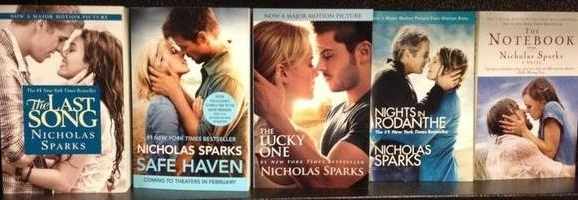
The novel has already proved itself to be as infinite in genre, style, and subject matter as human experience itself, perhaps more diverse and more liberated than any other medium. From Daniel Defoe’s creation of the novel of character to Georges Perec’s omission of the letter “e”, from the removed third person narrators of Charles Dickens and Jane Austen and Victor Hugo to the immersed stream-of-consciousness of James Joyce and Virginia Woolf and Ralph Ellison, from the restrained novel of manners to the extravagant Gothic to the sprawling Romantic to the experimental post-modernist to the implicitly political to the intricately metafictional, it is the very shape-shifting nature of the novel that makes it so difficult to define, whilst simultaneously standing testament to its limitlessness. It is impossible to mention every form the novel has taken from its beginnings in the early 18th century to the present day, let alone touch upon every genre it has formulated, every style it has stretched, every subject it has explored.
Despite this, the patterns that emerge when scrutinising those novels that are part of the Western canon, the classics that are broadly studied on English literature courses and held up as being artistically valuable, restrict the rich diversity the novel has to offer. The fact that there is such a thing as canonical literature in the first place limits the development of the novel as a form; the classics saturate our culture to such an extent that real life begins to mimic and reflect common tropes, stereotypes, and ideologies found within this small selection of novels.
This limitation is particularly evident when looking at representation or, more importantly, for representation.
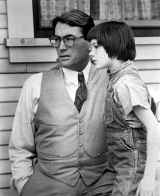 According to the Center for Learning and Teaching of Literature, the ten books most frequently taught in high school English classes in the USA are: Romeo and Juliet, Macbeth, Huckleberry Finn, Julius Caesar, To Kill a Mockingbird, The Scarlet Letter, Of Mice and Men, Hamlet, The Great Gatsby, and Lord of the Flies. Although six of these ten books feature women (Juliet Capulet, Lady Macbeth and the three witches, Scout Finch, Hester Prynn, Ophelia, Daisy Buchanan and Jordan Baker) as main characters, only three of these women (Juliet Capulet, Scout Finch, Hester Prynn) are the protagonists of the novels they are featured in. Juliet is not even the sole protagonist of Romeo and Juliet, it could be argued that Scout is merely the narrator of To Kill a Mockingbird, with Atticus Finch as protagonist, and the strength of Hester Prynn lies more in anti-Puritanism than anti-sexism. Only one of these ten novels (To Kill a Mockingbird) was written by a woman. Only three of them (Huckleberry Finn, To Kill a Mockingbird, Of Mice and Men) feature people of colour as key characters, and the representation of these people of colour is problematic in many ways. Not a single one of these ten novels features an explicitly LGBTQ+ character.
According to the Center for Learning and Teaching of Literature, the ten books most frequently taught in high school English classes in the USA are: Romeo and Juliet, Macbeth, Huckleberry Finn, Julius Caesar, To Kill a Mockingbird, The Scarlet Letter, Of Mice and Men, Hamlet, The Great Gatsby, and Lord of the Flies. Although six of these ten books feature women (Juliet Capulet, Lady Macbeth and the three witches, Scout Finch, Hester Prynn, Ophelia, Daisy Buchanan and Jordan Baker) as main characters, only three of these women (Juliet Capulet, Scout Finch, Hester Prynn) are the protagonists of the novels they are featured in. Juliet is not even the sole protagonist of Romeo and Juliet, it could be argued that Scout is merely the narrator of To Kill a Mockingbird, with Atticus Finch as protagonist, and the strength of Hester Prynn lies more in anti-Puritanism than anti-sexism. Only one of these ten novels (To Kill a Mockingbird) was written by a woman. Only three of them (Huckleberry Finn, To Kill a Mockingbird, Of Mice and Men) feature people of colour as key characters, and the representation of these people of colour is problematic in many ways. Not a single one of these ten novels features an explicitly LGBTQ+ character.
Of course, as students progress to higher levels of education, the range of novels studied in literature classes becomes more diverse, with the option on university literature courses of studying specific genres or time periods or themes. But how many people choose or have the choice of going to university? And how many of those people specifically study literature?
Those that do are often still faced with almost exclusively heterosexual, white, male protagonists, written by heterosexual, white, male authors. Novels that do feature female characters, such as Portrait of a Lady and Madame Bovary, are still written by men and enforce Laura Mulvey’s theory of the Male Gaze, lending a voyeuristic feel to the representation of women. Jane Austen, George Eliot, and the Bronte sisters are perhaps the only exceptions to this, but their texts are just a wave in amongst a sea of novels that exclude women, and all of them focus in some way on marriage plots, as though women are incapable of leading a story that does not involve men. Feminist authors like Virginia Woolf and Jean Rhys and people of colour authors like Chinua Achebe and Haruki Murakami are confined to classes focussing specifically on modernism or post-colonialism or the specific time period in which they were writing; they rarely appear in more general classes intending to give an overview of the novel as a form. Representation of characters and/or authors who identify outside of the gender binary is scarcer still.
Today, the male-dominated canon has been somewhat overwhelmed outside of academia by novels preoccupied with romance. There is absolutely nothing fundamentally wrong with a plot focussed on romance. Love is and always has been a universal theme in literature in some form or another. It is once again the limitations that have become apparent within this broad and potentially infinite form that are problematic.
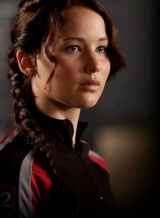 The young adult novel, a form of the novel currently considered notable for the way in which it explicitly tackles important and meaningful themes such as mental illness and sexuality, is particularly guilty of being surprisingly limited in representation. An alarming number of YA book covers feature white, heteronormative couples. Frequently, any person of colour who is a protagonist in a novel is whitewashed on the front cover and/or in subsequent movie adaptations, such as Katniss Everdeen in The Hunger Games. This is so the reader is able to identify with the protagonist and empathise more poignantly with their story, but it thereby assumes a white, heteronormative reader and excludes any reader who does not conform to this supposed societal normality, further marginalising already marginalised groups of people.
The young adult novel, a form of the novel currently considered notable for the way in which it explicitly tackles important and meaningful themes such as mental illness and sexuality, is particularly guilty of being surprisingly limited in representation. An alarming number of YA book covers feature white, heteronormative couples. Frequently, any person of colour who is a protagonist in a novel is whitewashed on the front cover and/or in subsequent movie adaptations, such as Katniss Everdeen in The Hunger Games. This is so the reader is able to identify with the protagonist and empathise more poignantly with their story, but it thereby assumes a white, heteronormative reader and excludes any reader who does not conform to this supposed societal normality, further marginalising already marginalised groups of people.
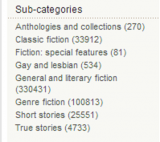 This marginalisation is immediately obvious for LGBTQ+ people seeking representation in literature. Most book shops place LGBTQ+ literature in a separate section from mainstream fiction, which is frequently labelled as Gay/Lesbian Literature, excluding every person who identifies as a different sexuality and mislabelling any other sexuality that happens to be featured in the literature placed in this section. Queer Literature would be a more inclusive title, but the use of the word queer by heteronormative people is problematic and offensive, as the word itself is a reclaimed slur and should only be used by people who identify as such. The fact that there is a separate section for LGBTQ+ literature is in itself arguably harmful, as it sets up the representation of the sexualities featured in these novels as being inherently and fundamentally different, and perpetuates the problematic idea that heterosexuality is some sort of default sexuality that everyone is born as identifying with and LGBTQ+ people somehow deviate from. But the alternative is to have to search through a sea of heteronormative romances when specifically looking for LGBTQ+ literature, and questioning what even constitutes LGBTQ+ literature in the first place brings up further problems.
This marginalisation is immediately obvious for LGBTQ+ people seeking representation in literature. Most book shops place LGBTQ+ literature in a separate section from mainstream fiction, which is frequently labelled as Gay/Lesbian Literature, excluding every person who identifies as a different sexuality and mislabelling any other sexuality that happens to be featured in the literature placed in this section. Queer Literature would be a more inclusive title, but the use of the word queer by heteronormative people is problematic and offensive, as the word itself is a reclaimed slur and should only be used by people who identify as such. The fact that there is a separate section for LGBTQ+ literature is in itself arguably harmful, as it sets up the representation of the sexualities featured in these novels as being inherently and fundamentally different, and perpetuates the problematic idea that heterosexuality is some sort of default sexuality that everyone is born as identifying with and LGBTQ+ people somehow deviate from. But the alternative is to have to search through a sea of heteronormative romances when specifically looking for LGBTQ+ literature, and questioning what even constitutes LGBTQ+ literature in the first place brings up further problems.
Until recently, novels – particularly young adult novels – that do feature LGBTQ+ characters are frequently solely about that character’s sexuality. While it would be just as problematic to write a novel in which an LGBTQ+ character’s sexuality was not represented at all (Dumbledore in the Harry Potter series is a quintessential example of this), focussing solely on their sexuality suggests that there is nothing more to an LGBTQ+ person than their sexuality, which is of course a ridiculous and harmful notion to perpetuate, even unintentionally.
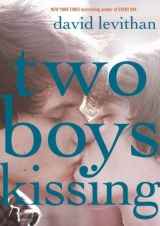 It is getting better. Representation of marginalised groups of people is slowly growing in modern culture; David Levithan’s new young adult novel Two Boys Kissing features exactly that on the front cover, and there are university classes being taught about homoerotic narratives in canonical novels such as Sherlock Holmes and Les Misérables. These are just two examples; with a little research, more become evident. Progress is being made, and that progress should be highlighted and celebrated alongside criticism regarding a lack of progress.
It is getting better. Representation of marginalised groups of people is slowly growing in modern culture; David Levithan’s new young adult novel Two Boys Kissing features exactly that on the front cover, and there are university classes being taught about homoerotic narratives in canonical novels such as Sherlock Holmes and Les Misérables. These are just two examples; with a little research, more become evident. Progress is being made, and that progress should be highlighted and celebrated alongside criticism regarding a lack of progress.
Because it is still not good enough. PBS’ Independent Lens found that “3 percent of the decision-making in media comes from women. That means that 97 percent of how women [and people of other genders] are portrayed is decided on by men”. The Guardian found that in the past 19 years, there have been “257 Academy Award-nominated portrayals of heterosexual characters, and 23 of gay, bisexual or transsexual characters. Of the heterosexual characters, 16.5% (59) die. Of the LGBT characters, 56.5% (13) die. Of the 10 LGBT characters who live, only four get happy endings”. Literature tells a similar story, and literature, film, TV, and music all saturate our culture and contribute to the formation of our ideologies in equally important and pervasive ways. It is impossible to argue that fiction is not important in real life. Marginalised groups of people need more and better representation in fiction in order to achieve equality.
It is getting better, but it is still not good enough, and it is so important that it does become good enough, and soon. The novel, the infinite form that seems thus far determined to restrict itself to limited finiteness, is the perfect starting place for instigating change.
What do you think? Leave a comment.











Amazing article!
Like many others, Sarah Water is one of my all time favorite authors. I have read all of her books, but was hesitant with Tipping The Velvet as I was worried that it might be a little bit too risque for me. In hindsight, I wish I had read it sooner. Anyway, thank you for spreading the awareness of this subject.
Thank you very much! I’ve not actually read Tipping The Velvet yet but it sounds really interesting, especially the comparisons I’ve seen of it to Defoe and Dickens style adventure stories – I’ll keep an eye out for it.
This is a great article. Something I noticed is that of the women protagonists in the top 10 books taught in high school, their personalities aren’t even the best either. I mean, think of Lady Macbeth or Daisy Buchanan (just to list two). Their portrayals are far from admirable or desirable. To portray them this way is also rather exclusionist. Your whole article is very articulately written about groups being segregated from literature. Even as an English major, I learned a lot from your article.
Thank you very much! That’s something I should have mentioned. Although Lady Macbeth is undeniably a strong female character and there’s something to be said about how easily she manipulated her husband, she’s hardly someone to look up to! I think Daisy Buchanan is a bit more ambiguously characterised – her remark about her daughter growing up to be a beautiful little fool is perhaps the most insightful in the novel, and she’s much more of a victim than many critics seem to realise – but again, she’s still not particularly admirable. Every other female protagonist I’ve ever studied in school and at university has been situated within some kind of romance plot. It leaves a lot to be desired.
I do agree that Daisy is somewhat more ambiguous. But I still think there are points in the novel where she does and says things that are questionable. Though in fairness to Daisy, that could actually be said of quite a few of the characters in “The Great Gatsby.” The way Fitzgerald has written it, the whole novel is an indictment on the 1920s, bourgeois lifestyle and their obsession with the materialistic aspects of life and culture. So really, everyone, and not just Daisy, leave much to be desired–at least in the eyes of Fitzgerald.
I completely agree. Every character in Gatsby is heavily flawed in some way, although some of their flaws can be blamed more on circumstance than others – whether that makes their flaws more or less forgiveable, or the characters themselves more or less likeable is down to personal interpretation, I think. For example, many readers put Tom’s racism down as being a reflection of the social climate at the time, but I’d argue that racism is still racism and is still inexcusable, regardless of the time period.
But getting back on topic! It was interesting to read reviews of the 2013 film adaptation in which Daisy was criticised for not waiting for Gatsby, despite the fact that she was under no obligation to and Gatsby was always more in love with the idea of her as a symbol than as a person. Many critics seemed to have misinterpreted their relationship as a classic star-crossed love story and thereby were disappointed by the film’s treatment of it. Daisy has many faults as a character, but I don’t think her not waiting for Gatsby is one of them.
Great essay Amelia!
Thank you!
Maybe it’s because I come from the same continent as Haruki Murakami does, but I never quite associate him as a ‘people of colour’ author.
Apologies if you object to it in any way. It’s a term that was coined by people of colour as a non-racist alternative to phrases like “non-white”. It’s a useful term to use when speaking generally like I was in this article; it’s best to be as specific as possible, but listing the race and/or ethnicity of every POC author would have run the risk of being exclusive in this case.
Oh don’t get me wrong. Usually I hear people refer to him as Asian writer or non-Western writer, but I seldom come across anyone referring to him as people of colour writer. I also genrally associate the term ‘people of colour writer’ with someone who writes about the issue of race/ethnicity in their stories. Since Murakami does not really do so in his novels, so that’s why I find it slightly awkward, but nothing majorly wrong.
Oh, I see what you mean. This could be considered another limitation of university syllabi.
The name Murakami is enough to tell who he is.
Nice writing! I recommend the book Perfect by Ellen Hopkins. In Perfect, one of the characters discovers she is a lesbian and eventually encounters some blacklash from her peers as a result. Also, the story told in verse makes for a poignant read.
Thank you! Perfect has some excellent reviews on Goodreads and the style sounds really interesting – I’ll keep an eye out for it.
Brilliant article – I definitely think there’s a sociological impact from the literature that we are taught in schools and as you say, the restrictions placed upon those particular kinds of literature. It’d be interesting to see if literature, as you propose, was broadened to include and represent a diverse society, what impact that would have on society itself?
I really enjoyed this article, thank you.
Thank you! It would be interesting to see the impact of that, I agree. I know for a fact that a more diverse representation in literature or TV for example means a lot to those being represented – you only have to look on Tumblr to see how well-received the main casts of TV shows like Graceland, which features people of colour and white people fairly equally, have been by people of colour, or how great it is for LGBTQ+ individuals to have an openly gay couple in Welcome to Night Vale – and that in itself is a fantastic impact to have. I can only imagine that more diverse representation would lead to wider acceptance, really, even if it takes a while for that to become the case – I’m hoping it’s something that we will see.
Loved this article. My own focus on The Artifice is on games and game culture, and if you’re interested in interesting writing about the gender/privilige issues in that area, consider reading the Borderhouse Blog and the writing of Samantha Allen and Mattie Brice.
Thank you very much! I’m not much of a gamer I’m afraid, so I don’t know how much I could contribute, but thank you very much for the recommendations. I’ll definitely look into it.
I enjoyed reading your article, I did English in college and university and all the books I read were heavily masculine. I even studied the module ‘Masculinity’ where we looked at James Bond and Fight Club, to name a few. I was bored reading about the same hegemonic male, time to read about something else I think!
Thank you – I can definitely relate to that!
Fantastic article and so very well written! Last semester I took a class called “Readings in Women Writers” as a “diversity requirement” and almost couldn’t believe that it has to be a completely separate class. I loved the class but I found it silly that it was a diversity requirement.
Thank you so much! I agree; I really wish classes like that weren’t necessary to highlight women writers, that women’s writing was automatically as much a part of the Western canon and literature classes as men’s is, but I think until we reach the point where that’s the case, classes like that are necessary and useful and the need for the pros of them outweigh the cons.
Brilliant article. I agree that there is a danger in compartmentalising novels – and, indeed, any form of art – into groups that invariably alienate the under-represented minority. Why should Achebe be taught specifically as a post-colonialist writer, for example, or Woolf as a feminist? I suppose it is more for convenience than anything, but (like you say) it does seem to compound the already problematic situation.
I completely agree. I don’t know that it would solve the problem entirely, but it might be a start to read texts like Achebe’s and Woolf’s within their contextual history or time period and discuss associated issues like post-colonialism and feminism respectively as intersectional aspects of the texts, rather than the definition of the texts.
Great article, with an interesting analysis of book covers and their contents/characters. You offer a detailed insight into the readers’ literary preferences, and I think your warning against classification of novels into fixed genres is absolutely legitimate
Thank you very much.
Great article. The factoid about the visibility and the death rate of gay characters in acclaimed cinema is really interesting. Your take on the word “queer” is quite different then how many Americans think of that term. It doesn’t seem to hold that kind of offensive weight the way other reclaimed slurs might here. Not really sure why. I do think, however, that it’s dangerous to group gay/lesbian literatures under the umbrella term “queer” for inclusivity’s sake. Gay literature has a very distinct tradition from that of lesbian literature, and grouping the two together along with other non-hetero sexualities overlooks the discreet and unique experiences of gay men and lesbian women (and, somewhat ironically, might further marginalize the experiences of those who don’t fit as neatly into “gay” or “lesbian” categories, those with sexualities who arguably get the least representation in any media form).
Your article also seems to get at a paradox in any marginalized group’s relation to genre. In the first place, having the genre exist—women’s writing, gay/lesbian writing, minority race writing—can often help provide platforms into which these groups might struggle to break into. LGBTQ presses, periodicals, film festivals, etc. help increase visibility. At the same time, the genre seems to box in writers. It leaves a lot of writers in a double-bind: they have a platform to take advantage of that subsequently leaves them stuck in non-general fiction sections of the bookstore.
Thank you very much. I think it’s really important to both be inclusive with the use of the word queer, and to look individually at different identities that fit within the term, because the term queer itself initially developed to designate political coalitions that form a really interesting context of how we categorise sexuality. It doesn’t have to be either looking at identities as queer or exclusively looking at each individual identity making up LGBTQIA; it can definitely be both.
Other than that, I completely agree with you. Every act of categorisation has implications and problematic aspects, especially when they’re being applied to a notion as complicated and multitudinous as human sexuality, and I don’t know that there’s a solution to these paradoxes.
The popularity of video games that will increase over the next decade is really going to stir up our culture’s perceptions of genres and in particular the novel, the one genre that I believe is as expansive as games.
Great read.
Thank you.